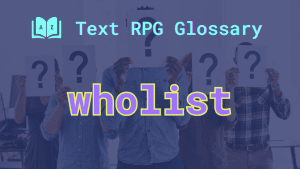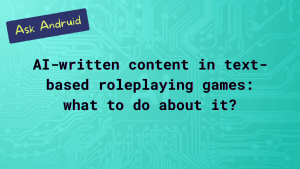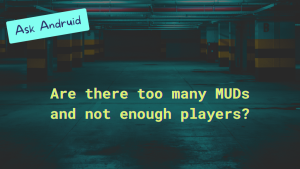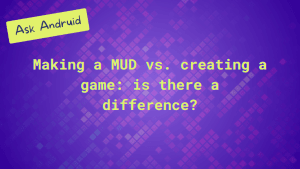What is a wholist?

A wholist is a list that displays the names of all players currently online in a text-based roleplaying game, such as a multi-user dungeon (MUD). This list allows players to see who else is active in the game at the same time.
The wholist can often be accessed through a simple command, such as “who”, and may provide additional details, like a character’s title, level, or class. It’s a helpful tool for finding others to interact with in the game.
Jump to Section
- What is a wholist?
- Wholist examples
- Myths about wholists
- Wholist FAQs
- How do I view the wholist?
- What information does a wholist show?
- Can I interact with players directly from the wholist?
- Why is the wholist important in text-based roleplaying games?
- Can the wholist only be accessed from inside the game?
- Why do some games not have a wholist?
- Do game staff see a different wholist?
A brief history of the term
The term “wholist” originated in online gaming communities, particularly within MUDs in the 1980s and 1990s.
Over time, as gaming evolved and became more graphical, the use of the term diminished. It became less common in modern MMORPGs and other online games, where interfaces often provide this information automatically or by interacting with the GUI.
Modern usage
Today, the term is still used in some text-based gaming communities, particularly in MUDs and other niche online roleplaying games. It is also recognized by veteran gamers who are familiar with older gaming systems.
Types of games that may feature a wholist include:
MUD, MUSH, Talker, RPMUD, Chat RPG, RPI, and RPE.
Wholist examples
Some ways that the wholist might be used include:
- Checking the wholist for friends: In a multi-user dungeon (MUD), a player might use the wholist to see if their friends are online before starting a new quest.
- Finding a group: A player might look at the wholist to find others who are online and interested in teaming up for a dungeon run.
- Avoiding rivals: In a PvP game, a player might use the wholist to check if any known rivals or enemies are online, deciding whether to stay hidden.
- Guild activity: A guild leader might regularly check the wholist to see how many guild members are online and available for a meeting or event.
- Event announcement: Game administrators might monitor the wholist to decide the best time to announce an in-game event when the most players are online.
Myths about wholists
- Wholists show everyone online: Games often support a way to appear offline, so that players (or staff) can hide their status from the wholist. However, not all games allow this.
- Wholists are just for finding friends: While often used to find friends, the wholist can also be a strategic tool for planning attacks, forming groups, or avoiding enemies, especially in PvP-heavy games.
- Wholists exist in all MUDs: Not all games have a wholist or implement the wholist in the same way. Some games only display a full list to game admins, for example.
Wholist FAQs
How do I view the wholist?
You can typically access the wholist by entering a specific command, often something simple like “who” or “wholist,” depending on the game. Usually, the command will bring up the list of all online players, sometimes with additional details such as character names, locations, or statuses.
What information does a wholist show?
A wholist usually displays the names of all online players, and it may include extra details like a title, level, class, whether they’re AFK, or how long they’ve been idle. The exact information can vary depending on the game and what it allows. Some games may even allow a short custom string written by the player, including color codes.

Can I interact with players directly from the wholist?
In many text-based RPGs, you can interact with players directly from the wholist by sending them a tell, whisper, or chat request. This allows for quick communication to coordinate activities or check out where other characters are in the game world.
Why is the wholist important in text-based roleplaying games?
The wholist is important because it helps players find others who are currently active and in-game. It’s an important tool for socializing, coordinating in-game activities, or just knowing who else is around in the game world.
Can the wholist only be accessed from inside the game?
Not always! Some games display their wholist on their website as a way to encourage new or returning players to log in. Similarly, a game may display their Discord for the same reason: to show that they’re an active community and to encourage new members to join.
Why do some games not have a wholist?
While a wholist is a great tool for helping players find each other, it can be abused or used in unintended ways. Sometimes, a game will hide the wholist from players in order to prevent metagaming and IC/OOC crossover. In these games, player characters (PCs) are expected to find each other using in-character (IC) means, and the wholist is considered an OOC tool.
Do game staff see a different wholist?
It depends on the game, but staff typically see more information on the wholist than players. For example, they might see the number of the room the player is in or whether the player is currently hidden/showing as “offline”. However, the type of information that can be seen may depend on the staff member’s permission level.




Leave a Comment